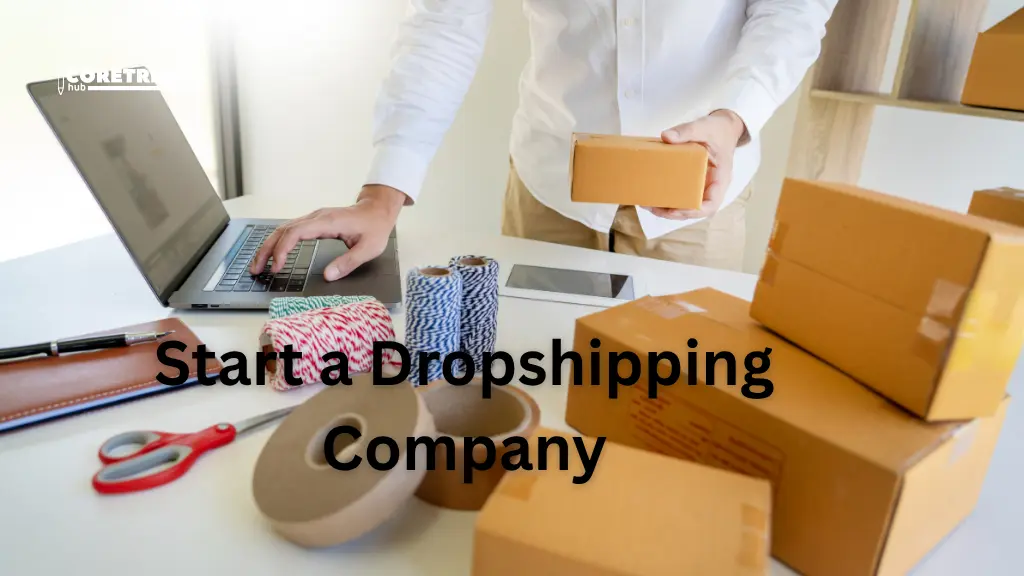Dropshipping is a simple business model where you run an online store without keeping products in stock. Instead of buying items in bulk, you only purchase a product after a customer places an order. The supplier then ships the item directly to the customer. This way, you don’t handle packaging, storage, or delivery. Your main role is to set up the store, market the products, and take care of customers.
People choose dropshipping because it needs less money to start. You don’t need to buy stock upfront, so the risk is lower. It also gives flexibility, as you can manage the store from anywhere with just a laptop and internet. Many use it as a side income, while others grow it into a full-time business.
Table of Contents
Factors That Affect Dropshipping Earnings
- Product Selection and Demand: The type of products you sell plays a big role in how much you earn. Popular products with steady demand usually bring more sales. If you choose trending or evergreen items, you can make better profits. On the other hand, selling products with low demand may result in fewer sales and slower growth.
- Supplier Quality and Reliability: Suppliers are the backbone of dropshipping. A reliable supplier ensures fast delivery, good product quality, and fewer refunds. Delays, damaged items, or poor service can quickly hurt your reputation. Working with trusted suppliers improves customer satisfaction and boosts long-term income.
- Marketing and Advertising: No matter how good your products are, you need strong marketing. Paid ads, social media, and SEO help bring traffic to your store. The more effective your marketing, the more sales you make. Poor advertising often means low income and wasted money.
- Store Management and Customer Service: Managing your store well also affects earnings. Quick order processing, clear product descriptions, and helpful customer support increase trust. Happy customers often come back or recommend your store to others. This creates repeat sales and steady income over time.
Average Profit Margins in Dropshipping
Typical Percentage Margins
In dropshipping, profit margins are usually between 10% and 30%. This means if you sell a product for $50, you might earn $5 to $15 after costs. Margins are smaller compared to traditional stores because you don’t buy products in bulk. However, with smart pricing and the right products, you can still make steady profits.
High vs. Low Ticket Products
Low-cost products, like phone cases or small gadgets, sell more often but give smaller profits per sale. High-ticket products, like furniture or electronics, give bigger profits per order but may sell less often. Choosing between high or low-ticket items depends on your budget, store strategy, and marketing efforts.
Impact of Competition
Competition also affects margins. If many sellers offer the same product, you may need to lower prices to attract buyers, which reduces profit. Unique products or strong branding can help you keep higher margins and earn more.
Examples of Potential Monthly and Yearly Earnings
Beginner Level Earnings
New dropshippers often start slow because they are still learning the process. Monthly income usually falls between $100 to $1,000, but most of it goes back into ads, tools, or testing different products. Beginners may also face challenges like finding reliable suppliers or setting the right prices. At this stage, the focus is more on gaining experience than making big profits.
Intermediate Store Owners
When sellers gain some experience, their income starts to grow. Earnings can range from $1,000 to $10,000 per month. This growth comes from finding “winning products” that sell consistently. Intermediate sellers usually improve their ads, write better product descriptions, and provide good customer support. Many also start building repeat buyers, which makes income more stable compared to beginners.
Experienced Entrepreneurs
Experienced dropshippers who scale their business can earn $50,000 or more per year, with some reaching six figures. They often sell high-ticket or trending products and use advanced marketing strategies like email campaigns and influencer promotions. At this level, they build strong relationships with suppliers for faster shipping and better deals. While the income is much higher, it also requires more effort, investment, and careful planning to stay profitable.
Costs to Consider Before Calculating Profit
Product Costs and Supplier Fees
The first cost to consider is the price of the product itself. Since dropshippers buy items one by one, the cost per piece is higher than bulk buying. Some suppliers may also charge extra fees like handling or shipping costs. These small charges can reduce your final profit.
Marketing and Advertising Expenses
Marketing is one of the biggest costs in dropshipping. Paid ads on platforms like Facebook, Instagram, or Google can take up a large part of your budget. In the early stages, most of your earnings may go back into ads as you test products. Without smart marketing, it is hard to bring in sales.
Platform, Tools, and Hidden Fees
Running a dropshipping store also includes platform costs. You may need to pay for hosting, themes, or apps that add features to your store. Payment gateways also charge transaction fees on every sale. Other hidden costs like refunds, returns, or chargebacks can affect profits too.
Tips to Increase Your Dropshipping Income
- Pick products that people need or want regularly. Focus on items with steady demand or trending popularity. Avoid overly crowded markets unless you offer something unique. The right niche helps sell more and earn better profits.
- Use social media, paid ads, and email campaigns to bring more buyers. Test different strategies to see what works best. Good product images and clear descriptions also attract more customers.
- Answer questions quickly and solve issues fast. Show clear shipping info and encourage reviews. Happy customers buy again and recommend your store, increasing sales.
- Set prices that cover costs and give healthy profits. Offer discounts, bundles, or free shipping to attract buyers. Test different pricing strategies for best results.
- Reliable suppliers deliver products on time and maintain quality. This reduces refunds and complaints, keeping customers satisfied and profits steady.
- Process orders quickly and keep the store organized. Efficient operations save time and prevent mistakes that could cost money.
- Monitor sales, ads, and product performance regularly. Make changes based on what works best to increase revenue and reduce unnecessary costs.
Common Mistakes That Reduce Profits
- Selling Saturated Products: Many dropshippers make the mistake of selling products that everyone else is selling. When the market is crowded, you may need to lower prices just to compete. This reduces your profit margin and makes it harder to stand out. Choosing unique or trending products can help you maintain higher profits and attract more customers.
- Ignoring Customer Support: Neglecting customer questions or complaints can hurt your reputation. Unhappy customers may request refunds or leave negative reviews. Providing fast, helpful, and friendly support builds trust, encourages repeat purchases, and increases long-term income.
- Underestimating Costs: Some sellers forget to include all expenses, like shipping fees, platform charges, advertising, or returns. Ignoring these costs can make profits seem higher than they really are. Always calculate every cost to get a clear picture of your actual earnings.
- Weak Marketing Efforts: Even good products won’t sell if people don’t see them. Poor advertising, low-quality images, or unclear product descriptions can reduce traffic and sales. Investing time and money in effective marketing strategies helps drive more buyers to your store.
- Not Testing Products: Skipping product testing can lead to selling items that don’t meet quality expectations or fail to sell. Testing products first helps you avoid losses, ensures customer satisfaction, and increases the chance of consistent sales.
- Poor Store Management: Disorganized operations, slow order processing, or unclear product information can frustrate customers. A well-managed store improves efficiency, reduces errors, and provides a better shopping experience. This ultimately leads to higher sales and steady profits.
Conclusion
Dropshipping can be a good way to earn money online, but income varies for everyone. Beginners may earn only a small amount at first, while experienced sellers can make significant profits. How much you earn depends on your products, marketing, suppliers, and store management.
Success takes time, effort, and smart planning. Choosing the right products, providing good customer support, and investing in marketing can increase your earnings. While it is not a get-rich-quick method, consistent work and smart decisions can make dropshipping a reliable source of income over time.



